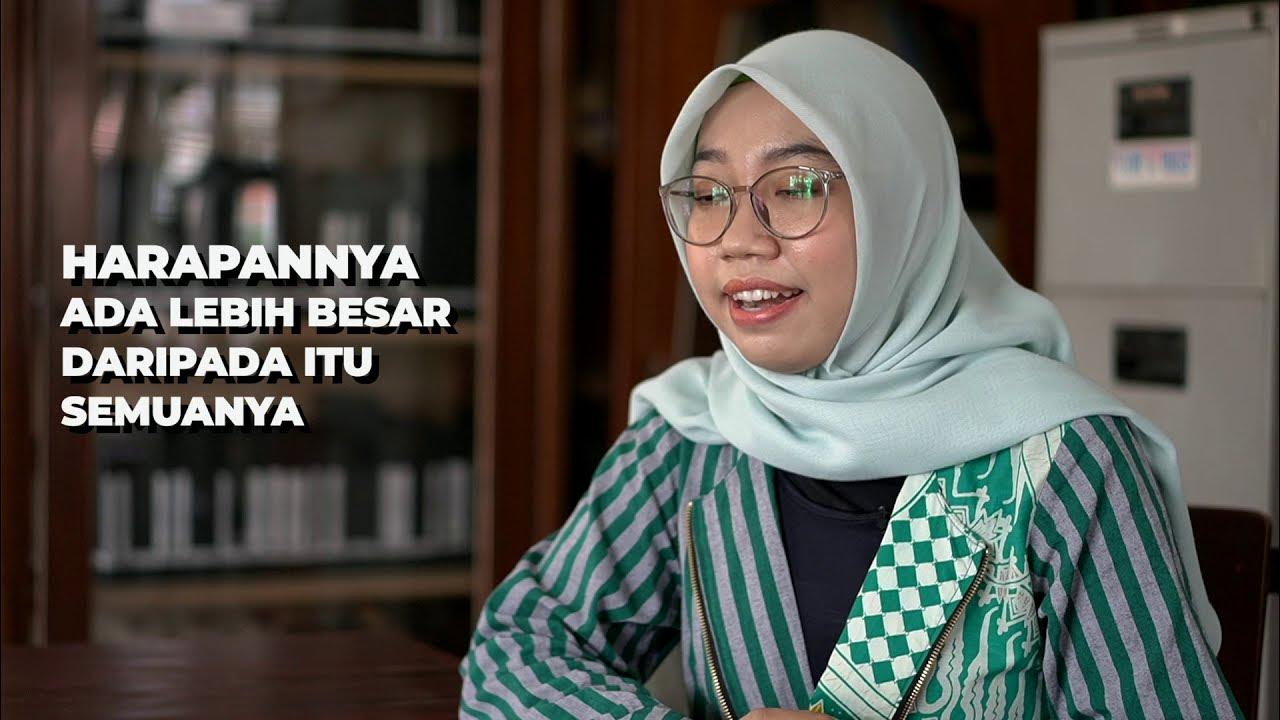TOPIK 2 Filosofi Pendidikan - Demonstrasi Kontekstual - Dasar-dasar Pendidikan Ki Hajar Dewantara
Summary
TLDRThe video presents a contextual demonstration on the educational principles of Ki Hajar Dewantara. Melisa Indria Rukmawati, a student from Universitas Terbuka, discusses the difference between education and teaching, emphasizing that education guides children's natural abilities to achieve happiness and safety. Dewantara likens a teacher to a farmer nurturing plants, symbolizing how teachers should support students' growth. The video also explains Dewantara’s concept of 'kodrat alam' (natural order) and 'kodrat zaman' (era's context), alongside his famous motto: 'Ing Ngarsa Sung Tulada, Ing Madya Mangun Karsa, Tut Wuri Handayani.'
Takeaways
- 📚 The presentation discusses contextualizing the basics of education according to Ki Hajar Dewantara.
- 🙋♀️ The speaker introduces herself as Melisa Indria Rukmawati, a PPG Prajabatan 2023 student from PGSD Universitas Terbuka.
- 🎓 Ki Hajar Dewantara differentiates between education and teaching, with education aiming to nurture all natural potentials of the child to achieve happiness.
- 📖 Education according to Ki Hajar Dewantara is about guiding the natural abilities of children for their well-being as individuals and as members of society.
- 🧠 'Budi Pekerti' is a concept combining cognitive (Cipta), affective (Karsa), and psychomotor elements to form character and behavior.
- 🌱 The teacher is likened to a farmer who nurtures students as seeds, ensuring they grow through careful guidance and support.
- 🏫 Schools are represented as fields where children grow, and the teacher helps them become good individuals by respecting the natural and social environment (kodrat alam and kodrat zaman).
- ⏳ 'Kodrat alam' refers to the environment's natural conditions, and 'kodrat zaman' refers to the era's characteristics.
- 💡 The phrase 'Ing Ngarso Sung Tulada' means that those in leadership should set a good example, while 'Ing Madya Mangun Karsa' means those in the middle should encourage initiative.
- 👩🏫 'Tut Wuri Handayani' means that those behind should provide support, summarizing Dewantara's approach to holistic education.
Q & A
Who is the main educational figure mentioned in the presentation?
-The main educational figure mentioned is Ki Hajar Dewantara.
What is the primary goal of education according to Ki Hajar Dewantara?
-The primary goal of education according to Ki Hajar Dewantara is to guide children so they can achieve the highest level of safety and happiness both as individuals and as members of society.
How does Ki Hajar Dewantara differentiate between education and teaching?
-Ki Hajar Dewantara differentiates education as a process that develops the natural potential of children, whereas teaching is the process of imparting useful knowledge for their physical and spiritual well-being.
What is 'budi pekerti' and how is it related to education?
-Budi pekerti is a combination of cognitive (Cipta), affective (Karsa), and psychomotor elements that shape behavior. In education, it reflects a holistic approach to personal development, emphasizing moral and character education.
What analogy does the speaker use to describe the role of a teacher?
-The speaker uses the analogy of a teacher being like a farmer. Just as a farmer nurtures plants by providing water, fertilizer, and care, a teacher nurtures students by guiding their growth without forcing quick results.
What does the phrase 'Merdeka Belajar' mean in the context of the presentation?
-'Merdeka Belajar' refers to a concept of learning freedom, where students are given the autonomy to determine their own learning process and actively participate in their education.
What is the significance of 'Kodrat Alam' and 'Kodrat Zaman' in Ki Hajar Dewantara's educational philosophy?
-'Kodrat Alam' refers to the natural environment in which children are raised, and 'Kodrat Zaman' refers to the era and societal conditions. Ki Hajar Dewantara emphasizes that education must consider both of these elements in guiding children.
What are the meanings of the terms 'Ingarsa Sungtulada,' 'Ing Madya Mangunkarsa,' and 'Tut Wuri Handayani'?
-These phrases describe the roles of an educator: 'Ingarsa Sungtulada' means leading by example, 'Ing Madya Mangunkarsa' means being in the middle to inspire initiative, and 'Tut Wuri Handayani' means supporting from behind to empower students.
What is the connection between a teacher and a farmer in the context of education?
-Just like a farmer nurtures plants with patience and care, allowing them to grow naturally, a teacher nurtures students by fostering their natural development without rushing or forcing them to mature prematurely.
What is the purpose of this presentation?
-The purpose of the presentation is to demonstrate a contextualized understanding of Ki Hajar Dewantara's educational principles as part of a course assignment for students at Universitas Terbuka.
Outlines

This section is available to paid users only. Please upgrade to access this part.
Upgrade NowMindmap

This section is available to paid users only. Please upgrade to access this part.
Upgrade NowKeywords

This section is available to paid users only. Please upgrade to access this part.
Upgrade NowHighlights

This section is available to paid users only. Please upgrade to access this part.
Upgrade NowTranscripts

This section is available to paid users only. Please upgrade to access this part.
Upgrade NowBrowse More Related Video
5.0 / 5 (0 votes)





